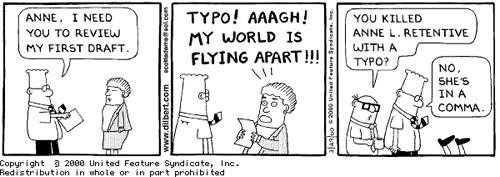

Newspaper critique: A guide
Updated Aug. 10, 2006
B reak down your critique into divisions, keeping each short and to the point. Use the following as a guide. In your critique, offer general observations supported by specific examples . Your critique should present a comprehensive look at what's good and what's not so good (open to improvement). With open to improvement, offer specific solutions or alternatives -- what you would have done had you had the time. Note: Do not use I think or I believe — don't use the first person at all. It's not your personal belief but your professional assessment, so you don't use I. Just say: An alternative is . . . ; not I think 'X' . . . (It only weakens your assertions.)
Style: It will be no more than (and no less than) four (4) pages*, single-spaced, in 12 pt. Times with 1-inch borders. An additional 1/2 page will be devoted to the Web presence of the newspaper.The cover sheet will be the grade sheet that I will give you. Do not put the critique in a folder; just fold the newspaper and put the critique in the fold. For your assessment, simply staple it in the upper left-hand corner and, then, attach the cover (grade) sheet to your critique with a paper clip. Do not staple the grade sheet to your critique. If you do, it means I have to unstaple the grade sheet to use it -- and you will lose points. (*The main critique should be no less than four pages. In other words, get as close to four pages as possible. Actually, given what you have to say, along with providing the necessary examples, the tough part is — or should be — keeping it to only four pages.)
Header: Your first page will begin with the name of the newspaper followed by critiqued by (your name) immediately beneath it. For this critique (something you would not do normally), also include the following in a paragraph immediately below that: Ownership, circulation, coverage area, newsroom staff size, the names of the publisher and editor, contact persons and contact info, and any other piece of information that might make this newspaper unique or might be important to a better understanding of the critique. (You must know the newspaper environment and audience to do an accurate and effective critique.) For example:
The Everyday Gazette
Critiqued by Malcolm Gibson Ownership: Gannett. Circulation: 120,000 (ABC paid). Coverage area/market: Metropolitan Everyday, U.S.A. , a seaside community serving tourists, upper-level retirees and industrial workers. (Include approximate population of circulation area.) Newsroom size: 122. Publisher: Jim Jones. Editor: Sally Jones. Contact persons: Sally Bosswoman, managing editor, 212-555-5555; e-mail: sjones@hernewspaper.com; Billy Bob Wordguy, copy editor, 212-555-5555; e-mail: bwordguy@hernewspaper.com. Other: The newspaper won the Pulitzer Prize for public service in 1999 for a series of stories on diaper rash and is one of the leading advocates of public journalism.
Introduction: Give a general impression (overview) of the newspaper — its strengths and weaknesses. This is a short synopsis of what your detailed critique shows. Also note how you did the critique and which sections/areas you evaluated. Always cite which issue(s) you used for your critique. This is relatively short and to the point.
General content: This goes to content (reporting and writing) of stories — collectively and individually. Overall story selection and balance strong, weak? Reporting generally strong, weak? Writing? Editing? Style, both writing and editing? Consistent? Suggestions on how you would improve. Give specific examples/alternatives to support your contentions, good, bad and in between. This is your longest section. It accounts for the greatest portion of your grade.
Packaging (layout and design, including graphics): Simple enough. Is the layout and design complementary to the content. Does it support or detract? What works; what doesn't? And why? Accurate? Relevant? Give specific examples (suggested alternatives). Include comments on photos and graphics in this section.
Headlines: General impressions supported by specific examples with recommended solutions/alternatives.
Cutlines: General impressions supported by specific examples with recommended solutions/alternatives.
Other: General impressions of other aspects of the newspaper — or something special that sets it apart — supported by specific examples with recommended solutions.
Conclusion: Relatively short, but restate your general impressions, leaving on a positive note — something unique you ran across that really caught your eye. For example, one time I used a classified ad — old photos found on the side of the road. I called the newspaper, found out what it entailed, and suggested that it would make a good story. But it could be anything -- but something to leave in the mind of the person reading the critique that you'd like to leave with that person.
Web: General impressions the newspaper's Web presence, especially how it relates to the print product (how each might enhance — or detract? — from the other. (Note: 1/2 page max., in addition to the four pages for the main critique.)
Remember: Follow the format closely, though you can change the order of the sections, depending on how they fit best in what you need to emphasize. But have a logical order. Do not exceed the limits. Give specific examples to support your contentions. Include the marked-up edition of the complete newspaper you critiqued. And concentrate on the good as well as the not-so-good — but balance all to leave the impression you want: that the newspaper is relatively strong or weak overall.
Class presentation: You will present your findings to the class on a day indicated on the class schedule. You should have overheads (or Powerpoint) to help illustrate your main points. This is a formal 15- to 20-minute presentation for which you receive a grade as part of the overall grade for your critique.